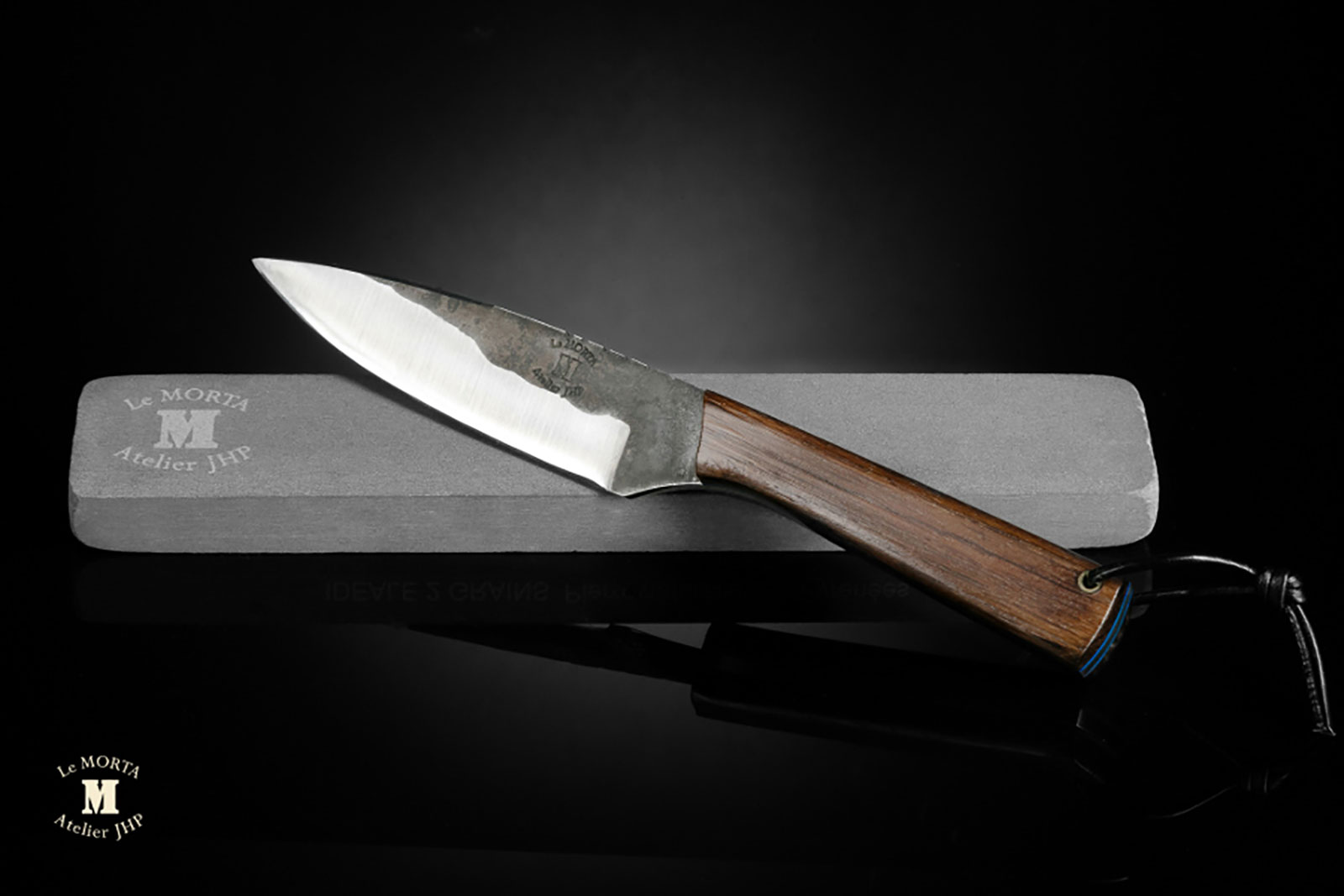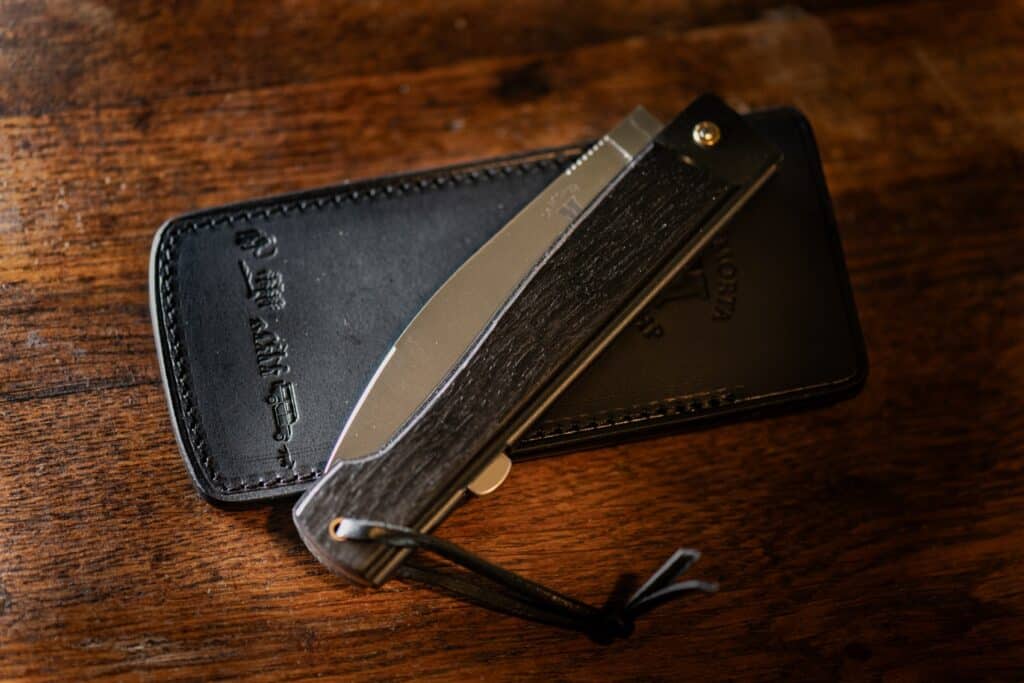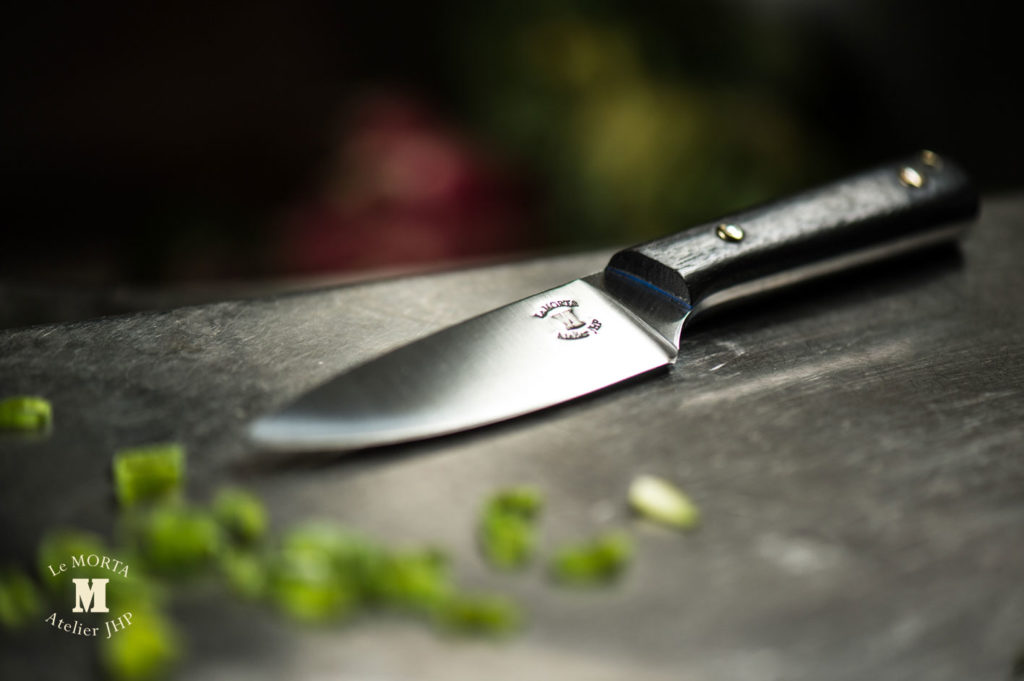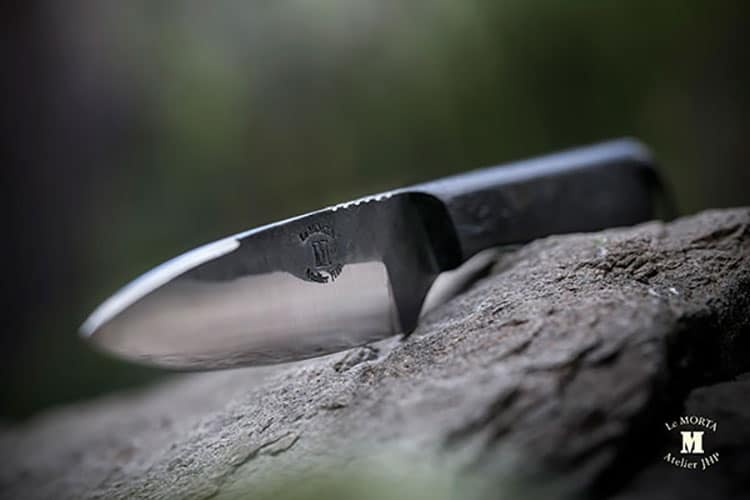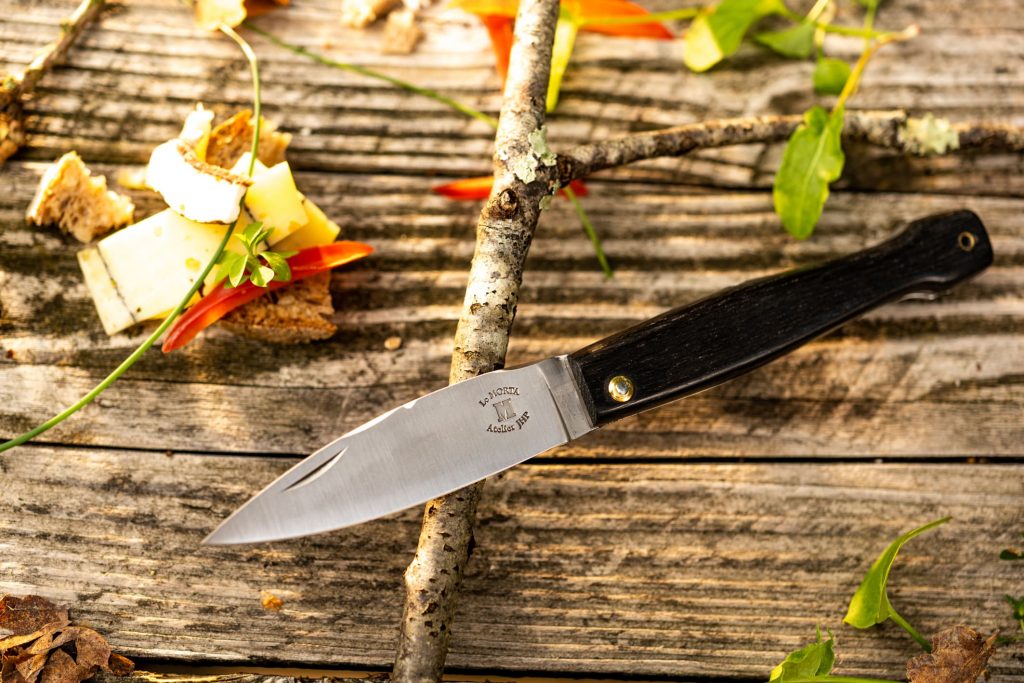In the realm of fine cutlery, the art of stropping a knife is as much about tradition as it is about technique. At Couteaux Morta, where each knife is a blend of ancient Morta wood and French craftsmanship, stropping is not just a maintenance task; it’s a way to honor the knife’s heritage. This guide takes you through the nuanced steps of stropping, ensuring that your Couteaux Morta knife retains not just its razor-sharp edge but also the story it carries, a story of resilience, precision, and centuries-old legacy.
What is stropping and why is it important?
Stropping is more than just a finishing touch; it’s a vital step in knife maintenance. But what exactly is stropping?
Simply put, stropping involves dragging the blade across a surface, typically a leather strop, to polish and align the edge of the blade. This process removes any burrs and imperfections, resulting in a razor-sharp edge.
But why is stropping so important?
When you use a strop, you’re not just sharpening the blade; you’re also polishing and refining the edge. This is crucial for maintaining the sharpness and integrity of your knife over time.
Stropping ensures that the edge of your Couteaux Morta knife remains sharp, consistent, and ready for any task, whether it’s slicing through a tough piece of meat or finely chopping herbs.
What tools do you need for stropping? ⚔️
To begin stropping, you’ll need a few essential tools. The most important is, of course, the strop itself.
At Couteaux Morta, we recommend a high-quality leather strop. Leather is an ideal material as it’s both durable and gentle on the knife’s edge. It provides just the right amount of resistance and give, allowing for an effective and controlled stropping process.
Next, you’ll need a stropping compound. This compound, often in the form of a spray or paste, is applied to the surface of the strop. It contains fine abrasive particles that aid in polishing the blade’s edge.
Preparing your knife: How do you inspect your blade?
Before you begin stropping, it’s crucial to inspect the blade of your knife.
For a Couteaux Morta knife, known for its unique Morta wood handle and high-quality steel, this step is particularly important. Hold the knife under a light source and look along the edge of the blade.
What you’re looking for are any nicks or dull spots. If you notice any inconsistencies, it might be a sign that your knife needs more than just stropping – perhaps a session with a sharpening stone.
How should you prepare the strop?
Preparing the strop is a key step in ensuring an effective stropping process. At Couteaux Morta, we recommend using a high-quality leather strop, which aligns perfectly with the craftsmanship of our knives.
First, if you’re using a stropping compound (which we advise for a more refined edge), apply a small amount evenly across the surface of the strop. This compound acts as an abrasive to help polish and refine the blade’s edge.
Remember, a little goes a long way – you don’t want to oversaturate your strop. If your strop feels dry or rough, you can condition it with a bit of leather conditioner to maintain its suppleness.
What’s the best technique to strop a knife?
Stropping a knife is more about finesse than force. Start by holding the knife at a 20-degree angle to the strop. This angle is ideal for most Couteaux Morta knives, especially our kitchen and outdoor ranges.
Gently glide the blade across the strop, moving away from the cutting edge. This motion helps to realign the edge without removing too much metal.
Flip the knife and repeat on the other side. It’s important to maintain consistent pressure and angle throughout the process.
What are the risks of overcompensating pressure?
One common mistake in stropping is applying too much pressure. This can lead to an uneven edge or even damage the blade.
Remember, the goal of stropping is to polish and realign the edge, not to reshape it.
Use light, consistent strokes. If you’re using a Couteaux Morta knife, the quality of the steel means that less pressure is needed to achieve a razor-sharp edge.
How can you maintain the correct angle?
Maintaining the correct angle is crucial for effective stropping. An angle too steep can round off the edge, while too shallow an angle won’t effectively realign the edge.
For beginners, it might be helpful to use an angle guide. With practice, you’ll develop a feel for the correct angle.
Honing vs. Stropping: What’s the difference?
Honing and stropping are both essential for maintaining a sharp knife, but they serve different purposes. Honing, typically done with a honing steel or sharpening stone, realigns the edge of the blade.
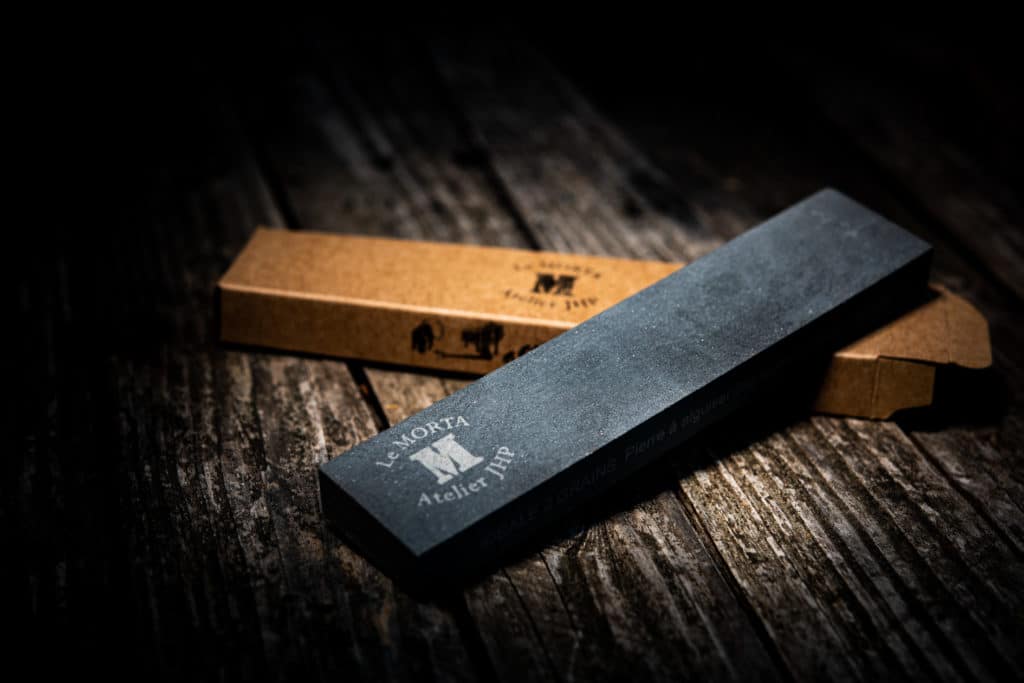
It’s a process that straightens out the microscopic teeth on the edge without removing much, if any, metal.
This is crucial for kitchen knives that see regular use. At Couteaux Morta, we often recommend honing your knife before each use to maintain its best edge.
When should you hone and when should you strop?
Stropping, on the other hand, is more about polishing the edge of the blade. It’s the final step in the sharpening process, ideal for removing any burrs left behind by sharpening stones. While honing can be done frequently, stropping is something you might do less often, to refine and polish the edge.
It’s particularly useful for our Couteaux Morta knives, which are known for their razor-sharp edges. Stropping enhances that sharpness, giving a smoother cut and extending the time between sharpenings.
Conclusion
Stropping is an essential part of this process, helping to keep your blade in top condition. Whether you’re using a traditional leather strop, a modern stropping belt, or alternating between honing and stropping, the goal is always the same: a sharp, reliable, and efficient cutting edge.
Our knives are crafted with the utmost care and precision, and they deserve a maintenance routine that matches their quality. By following these tips and techniques, you can ensure that your Couteaux Morta knife not only performs beautifully but also lasts a lifetime.


